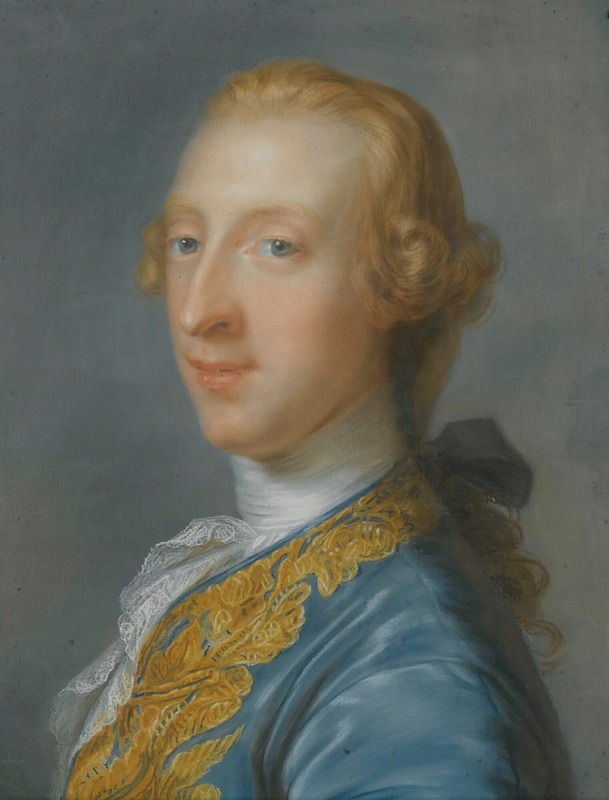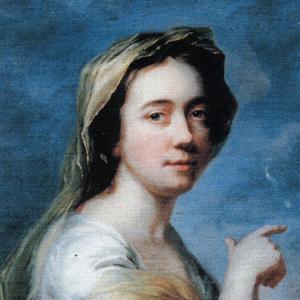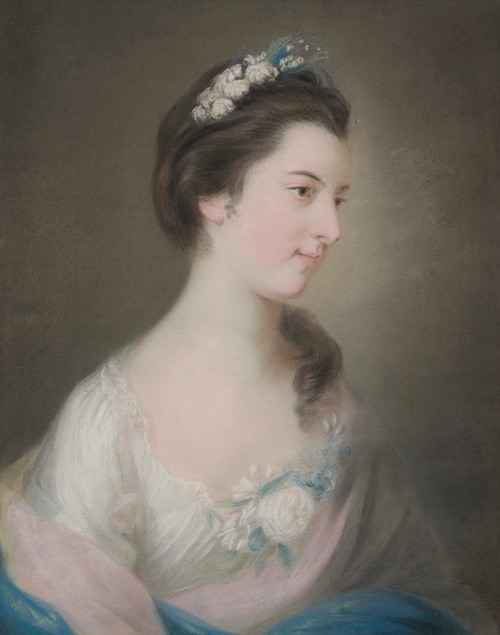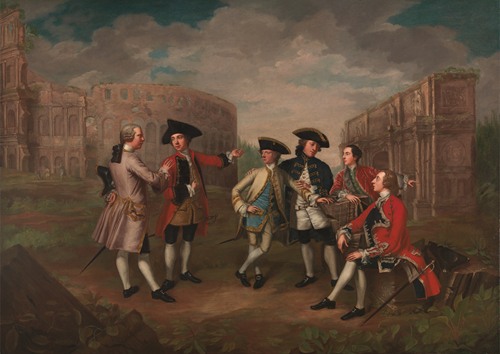

Catherine Read (or Katherine) was born in the early 18th century. She was most known for her work as a portrait-painter. She was for some years a fashionable artist in London, working in oils, crayons, and miniature. From 1760 she exhibited almost annually with either the Incorporated Society of Artists, the Free Society of Artist, or the Royal Academy, sending chiefly portraits of ladies and children of the aristocracy, which she painted with much grace and refinement.
Read was born in Dundee, Scotland, on 3 February 1723, to Alexander and Elizabeth Read, and one of thirteen children of an affluent Forfarshire family. She received her education from Maurice Quentin De La Tour in Edinburgh. Her mother was the sister of Sir John Wedderburn, 5th Baronet of Blackness, who fought in the Jacobite rising of 1745, and whose daughters were cared for by Read after his execution.
When the war ended at the Battle of Culloden and with family friends fleeing to France, Read’s family was prompted to follow suit for their association and support of the Jacobite cause through her uncle. Through their connections of the gentry, they were given sanctuary in Paris that same year and introduced to the painter Robert Strange, who is speculated to be Read’s teacher and introduction into the French artistic sphere. There she studied other works of art and improved her skills with little hindrance or instruction; it would have been hard for her to have been accepted into an academy class as a woman, let alone a foreigner whose family had a price on their heads for aiding and supporting a cause against the King of England.
This period was not to last, however, as she fled to Rome in 1750 along with a majority of the Jacobites that had sought refuge in Paris. While there, she became friends with members of the Roman Catholic Church, often commissioned to recreate master paintings in oil or pastel for those in high clerical positions. One of these faithful patrons, Cardinal Albani, allowed Read to copy some of the portraits he owned by Rosalba Carriera, which ultimately led the man to sit for her himself.
She remained in Rome until deciding to venture to England in 1753, with the blessing of Albani -who managed to help her keep face regardless of her family’s past alignment in the war. This era was not only filled with a healthy stream of patronage and commissions, as Read was communicating and submitting samples to the Society of Arts for their collection and approval of fixing pastels. However, her methods, when compared to those of Sebastien Jurine, were considered inferior as she used a different type of pastel than he.
In 1764, Read was on the road back to Paris for commissioned portraits of Madame Elisabeth through the Dauphin. Her work was shown by the Free Society (1761-1768) and the Society of Artists (1760-1772), of which she became an honorary member in 1769 along with the two other female pastel artists, Mary Benwell and Mary Black, in response to the Royal Academy accepting Angelica Kauffman and Mary Moser into their respective fold. Later, after a failed petition to the king, Read left to join the Royal Academy and was expelled from the Society as consequence.
Her London residence was in St. James's Place until 1766, when she moved to Jermyn Street.
New pastel artists rose into the public’s view and Read no longer commanded such a following.
In 1771 she went to India to paint the portraits of the English officers living there. She was accompanied by her niece, Helena Beatson, a clever young artist, who there married, in 1777, (Sir) Charles Oakeley, baronet, later governor of Madras. She is reported as being in that country in 1775 and 1777, and as dying at sea near Madras. Her death is recorded as 15 December 1778.


